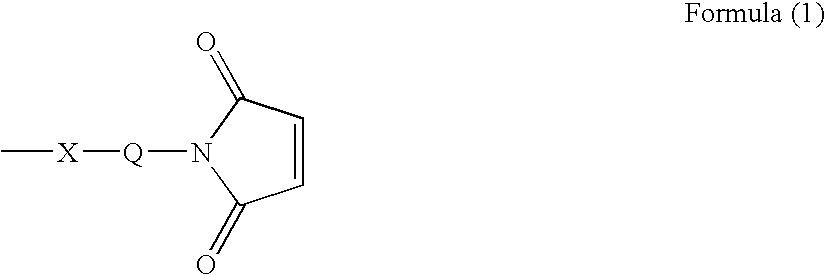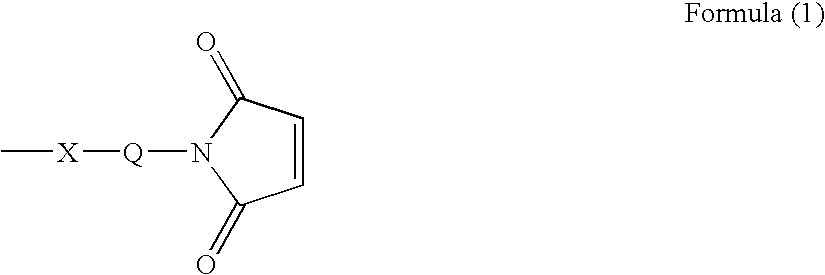Ligand immobilization support
a technology of immobilization support and ligand, which is applied in the field of polymer, can solve the problems of low affinity of ligand on the support, inability to change the temperature, and the gel itself dissolves at 40° c. or higher,
- Summary
- Abstract
- Description
- Claims
- Application Information
AI Technical Summary
Benefits of technology
Problems solved by technology
Method used
Image
Examples
example 1
(Synthesis of Cross-Linked Polymer Particle)
[0050] Using divinylbenzene (having a purity of 55%) as a cross-linking agent, precursor particles are prepared which include styrene (manufactured by Wako Pure Chemical Industries, Ltd.), methylmethacrylate (manufactured by Wako Pure Chemical Industries, Ltd.), and t-butyl methacrylate (manufactured by Wako Pure Chemical Industries, Ltd.) in the copolymerization ratios shown in Table 1. The method of producing the precursor particles comprises conducting the suspension polymerization, and classifying the polymer particles to obtain particles having an average particle size of 50 μm. The obtained particles are washed with ion-exchanged water and a solvent, and dried.
TABLE 1t-butylPrecursorStyreneMethylmethacrylatemethacrylateParticle No.(% by mol)(% by mol)(% by mol)P140060P275025P3950 5P425075P5 040 60
(Introduction of Polyoxyehtylene Chain)
[0051] 10 parts of the precursor particle is dispersed in 75 parts of hydrochloric acid (manuf...
PUM
| Property | Measurement | Unit |
|---|---|---|
| temperature | aaaaa | aaaaa |
| particle size | aaaaa | aaaaa |
| particle size | aaaaa | aaaaa |
Abstract
Description
Claims
Application Information
 Login to View More
Login to View More - R&D
- Intellectual Property
- Life Sciences
- Materials
- Tech Scout
- Unparalleled Data Quality
- Higher Quality Content
- 60% Fewer Hallucinations
Browse by: Latest US Patents, China's latest patents, Technical Efficacy Thesaurus, Application Domain, Technology Topic, Popular Technical Reports.
© 2025 PatSnap. All rights reserved.Legal|Privacy policy|Modern Slavery Act Transparency Statement|Sitemap|About US| Contact US: help@patsnap.com



